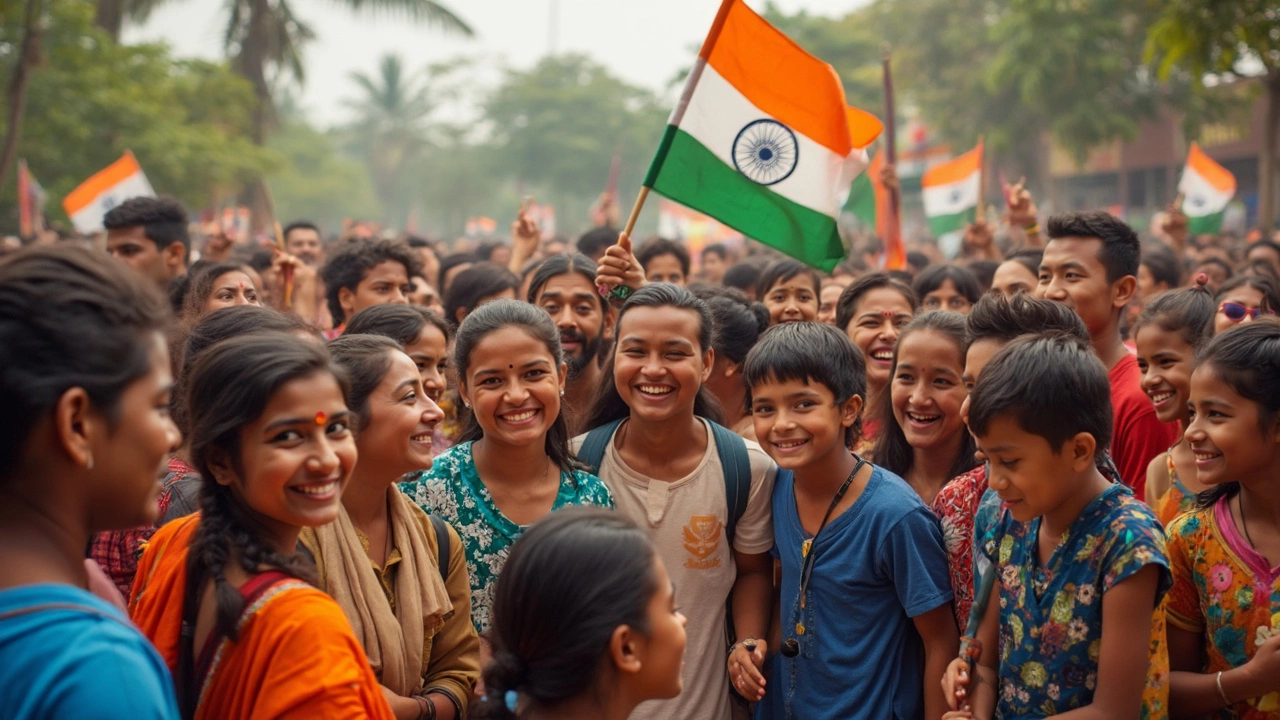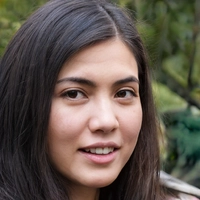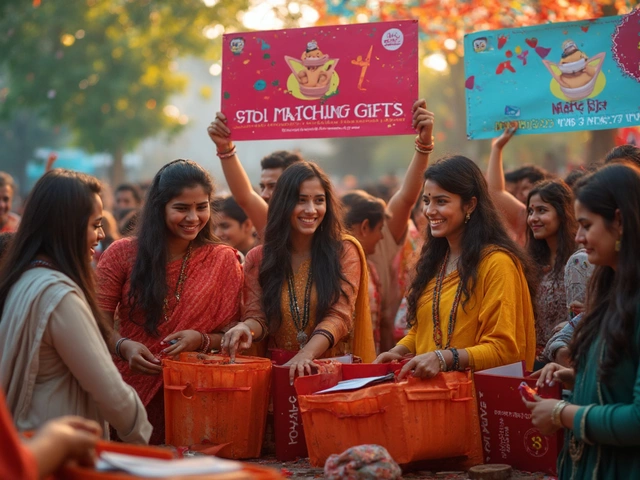Ask any global youth leader what comes to mind when you mention "the largest youth run organization," and you’ll hear one name over and over: AIESEC. This group isn’t just big; it’s a powerhouse. Founded way back in 1948, AIESEC now spans over 120 countries and territories, with more than 40,000 active members—and that means local chapters everywhere from Mumbai to Montreal to tiny villages in Eastern Europe. It’s run entirely by people under 30.
What’s the deal with AIESEC? They focus on leadership development, but not the stuffy, lecture-kind. Think international internships, volunteering, and actual hands-on decision making. High schoolers and college students help steer the whole thing, handling projects that range from launching global events to helping other teens build businesses. That’s peer-led leadership in action, on a massive scale.
- What Makes an Organization 'Youth-Run'?
- AIESEC: The Largest Youth-Run Organization
- How AIESEC Impacts Young People Around the World
- Getting Involved: What to Expect and Practical Tips
What Makes an Organization 'Youth-Run'?
So what separates a real youth run organization from groups where adults hover in the background, pulling the strings? It all comes down to who’s actually calling the shots, making the decisions, and getting their hands dirty with day-to-day work. In a true youth-run setup, young people—usually under 30—pick the leaders, set priorities, and handle everything from budgets to planning events.
It’s not just about having a few students on the team. For an organization to earn the "youth-run" label, youth have to own the big stuff: steering committees, official spokespersons, even international board members. Adults might mentor, but they don’t decide. AIESEC, for example, is led locally and globally by people aged 18-29. Positions turn over every year so the next bunch always gets a shot.
Here's how you know an organization is truly youth-run:
- Young people hold at least 2/3 of decision-making roles
- Members elect their leaders, not outsiders
- Youth handle finances, events, and strategy directly
- Adult involvement is mostly limited to advice—not action
And there’s research to back this up. A 2023 study by the International Youth Foundation found that, in effective youth-led groups, "youth not only participate—they control major processes and make final calls." Or, as the global chair of AIESEC put it in an interview:
"If you want real youth leadership, let young people make the mistakes, learn from them, and build something new. That's how you get real growth."
Most youth run organizations also focus on peer learning. Don’t expect adults to step in and fix problems right away. This helps young people learn responsibility and real management skills. Here’s a glance at how some global youth-led organizations break down ages on their boards:
| Organization | Average Board Age | Adult Advisors |
|---|---|---|
| AIESEC | 24 | Optional, not voting |
| European Youth Forum | 27 | Mentors only |
| YMCA Youth Section | 22 | Limited |
For anyone wanting to join or partner with a real youth run organization, ask about their leadership. Who’s making decisions? Who gets the final say? That’s where you’ll see if it’s youth-run in reality—not just in name.
AIESEC: The Largest Youth-Run Organization
AIESEC stands out because it’s run for youth, by youth. It kicked off in 1948 when a handful of students decided to build peace and understanding after World War II. Fast forward to today, and you’ll find AIESEC in more than 120 countries and territories. The membership? Over 40,000 active members, with hundreds of thousands of alumni powering businesses and communities all over the planet.
What’s wild about AIESEC isn’t just its headcount—it really is youth-led. All global, national, and local offices are managed by young people (usually 18–30 years old). There’s no shadowy board of adults pulling strings from backstage. Members vote for their own leaders every year; anyone can step up. The main focus is on practical leadership experience, international internships, and volunteer exchanges. Basically, if you want to work or volunteer in another country through a student group, AIESEC is probably your best bet.
Here’s a breakdown of AIESEC's global presence in 2024:
| Metric | Number |
|---|---|
| Countries & Territories | 120+ |
| Local Offices | 2,400+ |
| Active Members | 40,000+ |
| Annual Exchanges | Over 30,000 |
Each local chapter is basically a mini startup, handling projects like school outreach, community programs, and global internships. The really cool bit? The entire operation—from marketing to finance—is managed by students and recent grads. So, if you’re after a youth leadership experience that’s actually hands-on, this is it.
And the reach is legit. Partner companies range from well-known names like PwC and Electrolux to smaller social enterprises. So when people call AIESEC the largest youth run organization in the world, it’s not hype—it’s backed by the numbers and the impact.

How AIESEC Impacts Young People Around the World
One thing that makes the largest youth run organization stand out is how it actually shapes the lives of its members. AIESEC isn’t just about putting “leadership” on your resume; it’s about jumping into real projects, leading teams, and making decisions that matter. Every year, more than 30,000 young people get international experiences through AIESEC, and that covers everything from internships with startups in Southeast Asia to volunteer gigs in Africa where you help run schools or eco-projects.
Many members say the biggest change is in confidence and adaptability. You get thrown into new cultures and asked to solve actual problems. It’s not rare for a 20-year-old to be managing events with hundreds of attendees, or leading a team across different time zones. These aren’t just random tasks; they’re practical leadership challenges that build skills you’ll use way beyond your student years.
The numbers really add up. Check out these real stats from AIESEC in 2024:
| Area of Impact | Annual Participants | Countries Involved |
|---|---|---|
| International Internships | 12,500+ | 120+ |
| Global Volunteer Projects | 18,300+ | 95+ |
| Local Events and Conferences | 60,000+ | 110+ |
AIESEC’s projects often link back to the United Nations’ Sustainable Development Goals, so you don’t just pick any old internship—you get to work on stuff that actually helps the world. That means young people are out there tackling real issues like climate change, gender equality, education, and sustainable cities. And because everything is organized by youth for youth, there’s actual trust and support among members. You’re not just a cog in the machine—you call the shots.
If you’re looking to sharpen your skills, make worldwide friends, and get hands-on leadership practice, AIESEC is a legit way to do it. It’s where a lot of big-name leaders and entrepreneurs got their first break, so the results definitely pay off down the road.
Getting Involved: What to Expect and Practical Tips
If you're eyeing the chance to join the largest youth run organization, here's what you can actually expect and how you can make it happen. Jumping into AIESEC is a real hands-on experience, but there are some steps and a few quirks to know about.
First up, entry requirements. You usually need to be a student or recent graduate between 18 and 30 years old. Most people join through their university chapter; some cities have local chapters open to non-students too. Membership often kicks off with a round of interviews and simple team-building exercises—AIESEC wants proactive folks, not someone waiting on the sidelines.
Once you're in, you choose a role. These can be anything from project management to marketing to running fundraising events. Don’t be surprised if you’re asked to lead a project in your first year. The organization's all about learning by doing, so expect real responsibility, not just coffee runs.
- International internships: If you’re after global experience, AIESEC sends thousands of members abroad each year. There are internships focused on business, education, or social impact. Most placements last 6 to 12 weeks, and it’s up to you to pick where you want to go.
- Volunteering: Some local chapters run volunteer programs you can do right at home or abroad. These might include teaching, community projects, or sustainable development work.
- Leadership roles: Spots open up fast because everyone ages out by 30. You can become a team leader, VP, or even run a whole chapter long before you hit any kind of ‘career ceiling’.
Here’s a snapshot of what past new members say you’ll get out of it:
| Benefit | Percentage of Respondents |
|---|---|
| International Work or Volunteer Experience | 74% |
| Leadership Development | 90% |
| Network Expansion | 87% |
| Real-World Project Management | 65% |
If you’re interested, start by checking your university website or AIESEC's main site. Fill out their online application, which usually takes 10-15 minutes. Heads up: the process can take a couple of weeks, between intro calls and onboarding sessions. Don’t forget to prepare examples from your own life where you stepped up or worked with a team—AIESEC loves those stories.
Most members spend five to ten hours a week in their first role. If you want to run bigger projects or travel, you’ll probably add more hours. Either way, you’ll get loads of practical know-how and a crazy-good line for your resume. Best tip? Jump on the opportunities they offer as soon as you join—don’t wait for someone to tell you what to do next.






